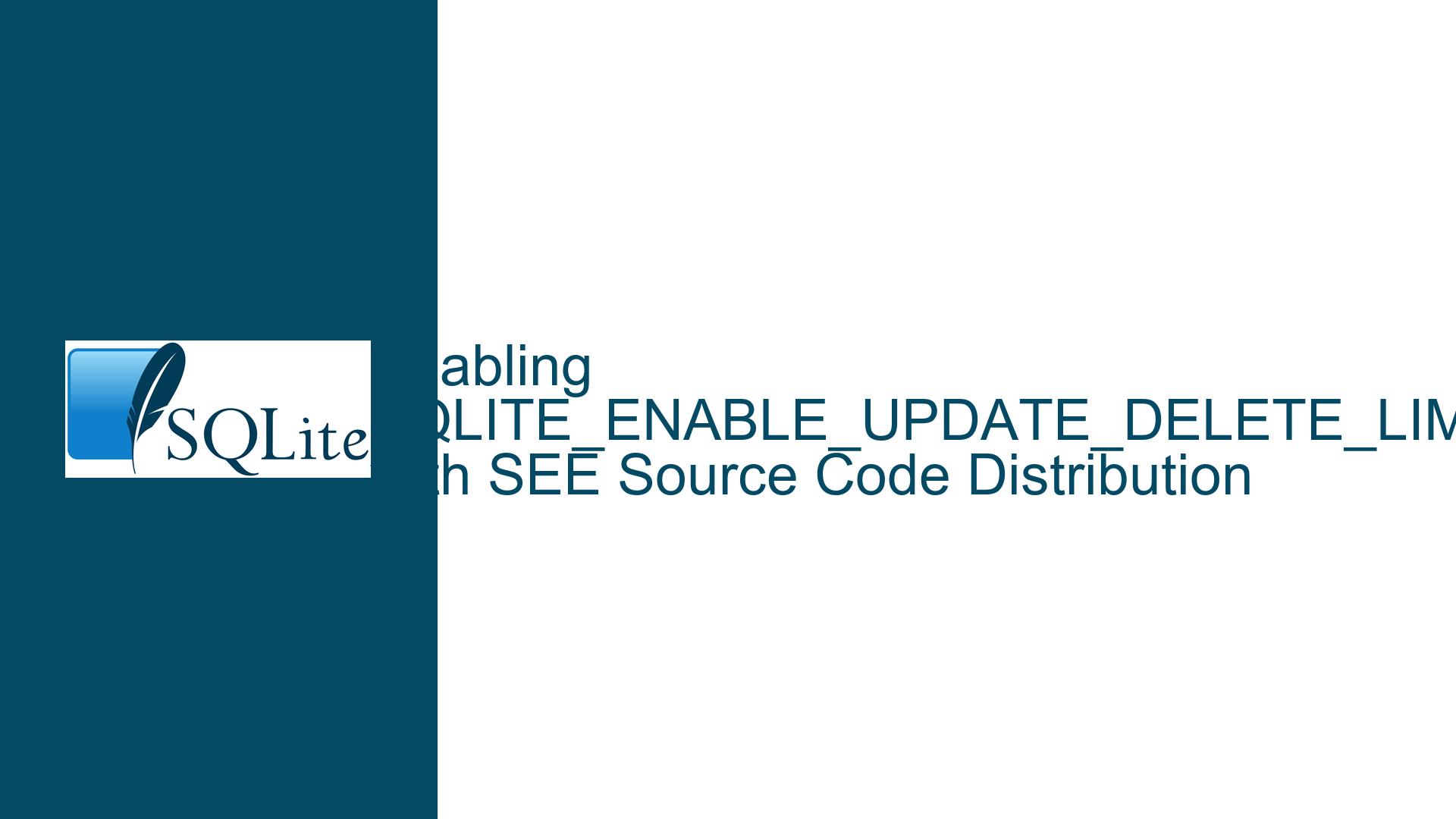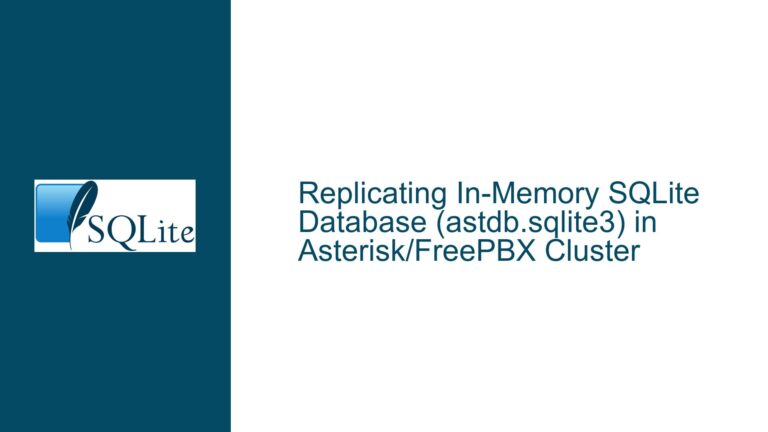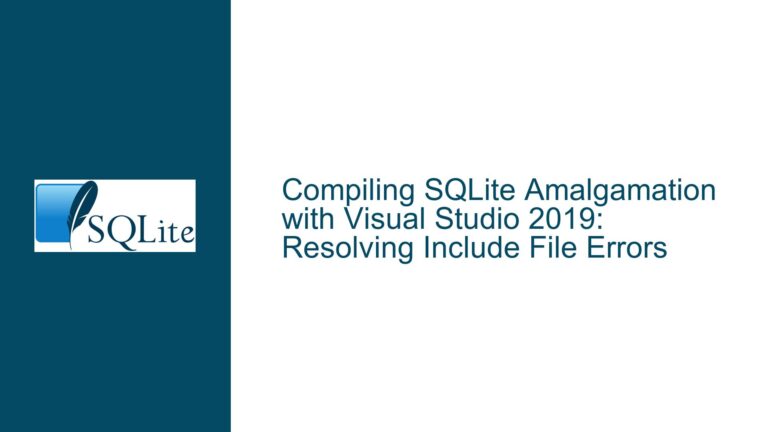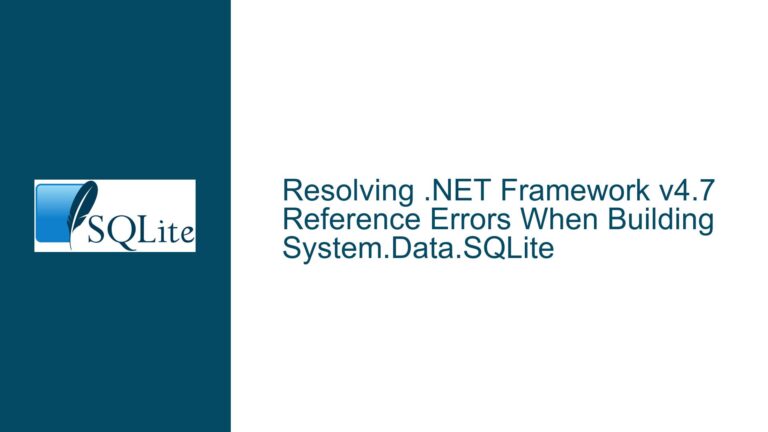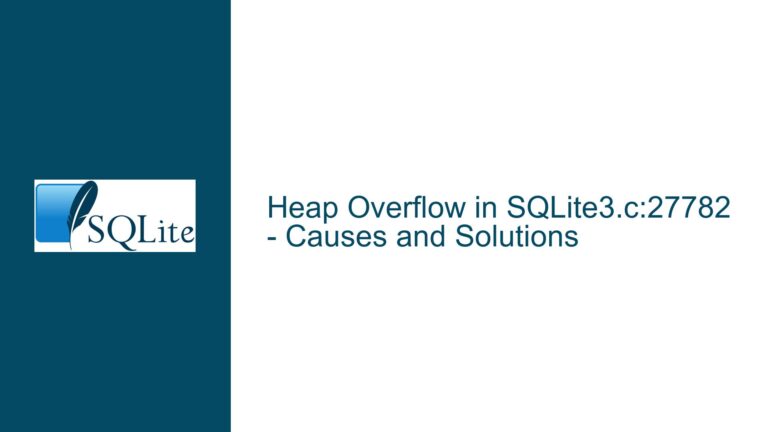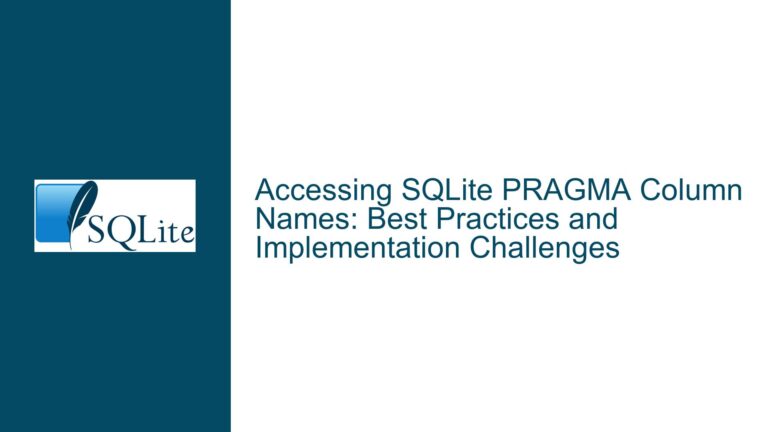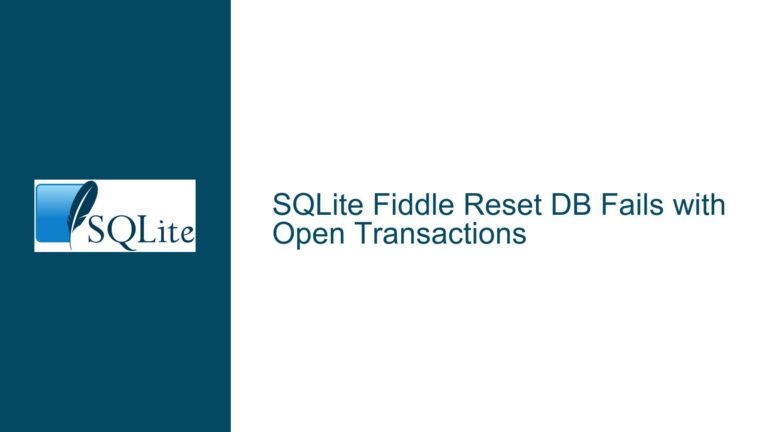Enabling SQLITE_ENABLE_UPDATE_DELETE_LIMIT with SEE Source Code Distribution
SQLITE_ENABLE_UPDATE_DELETE_LIMIT and SEE Integration Challenges
The SQLITE_ENABLE_UPDATE_DELETE_LIMIT compile-time option is a powerful feature in SQLite that allows the use of the LIMIT clause in UPDATE and DELETE statements. This feature is particularly useful for developers who need to control the scope of their data modifications, especially in large databases where bulk operations can be resource-intensive. However, integrating this feature with the SQLite Encryption Extension (SEE) source code distribution presents unique challenges. The SEE is a proprietary extension that provides encryption capabilities to SQLite, and its integration with custom compile-time options like SQLITE_ENABLE_UPDATE_DELETE_LIMIT requires a nuanced approach.
The primary issue arises from the way SEE files are built and distributed. The SEE source code is not publicly available, and its distribution model has evolved over time. This evolution has led to a situation where developers need to carefully navigate the integration of compile-time options like SQLITE_ENABLE_UPDATE_DELETE_LIMIT with the SEE source code. The challenge is further compounded by the fact that the SEE source code is often distributed in a pre-compiled form, making it difficult to apply custom compile-time options without access to the original source code.
Compile-Time Option Conflicts and SEE Build Process
One of the main causes of the integration challenge is the potential for conflicts between the SQLITE_ENABLE_UPDATE_DELETE_LIMIT compile-time option and the SEE build process. The SEE build process is designed to work with a specific set of compile-time options, and adding custom options like SQLITE_ENABLE_UPDATE_DELETE_LIMIT can disrupt this process. This disruption can lead to compilation errors, runtime issues, or even the complete failure of the SEE functionality.
Another cause is the lack of documentation on how to integrate custom compile-time options with the SEE source code. The SEE documentation primarily focuses on the encryption features and does not provide detailed guidance on how to modify the build process to include additional compile-time options. This lack of documentation can leave developers guessing about the correct way to integrate SQLITE_ENABLE_UPDATE_DELETE_LIMIT with the SEE source code.
Additionally, the SEE source code distribution model itself can be a cause of the issue. The SEE source code is often distributed in a pre-compiled form, which means that developers do not have access to the original source code. This lack of access makes it difficult to apply custom compile-time options, as the pre-compiled binaries are not designed to be modified. In some cases, the SEE source code may be distributed in a form that is not compatible with the standard SQLite build process, further complicating the integration of custom compile-time options.
Modifying the SEE Build Process and Ensuring Compatibility
To successfully integrate the SQLITE_ENABLE_UPDATE_DELETE_LIMIT compile-time option with the SEE source code, developers need to take a systematic approach. The first step is to obtain the SEE source code in a form that allows for modification. This may involve contacting the SEE provider and requesting access to the original source code or obtaining a version of the SEE source code that is compatible with the standard SQLite build process.
Once the SEE source code is available, the next step is to modify the build process to include the SQLITE_ENABLE_UPDATE_DELETE_LIMIT compile-time option. This modification typically involves editing the SQLite configuration files or the build scripts to ensure that the compile-time option is correctly applied. Developers should also ensure that the modified build process does not conflict with any other compile-time options that are required by the SEE source code.
After modifying the build process, developers should thoroughly test the integration to ensure that the SQLITE_ENABLE_UPDATE_DELETE_LIMIT feature works as expected and that the SEE functionality is not compromised. This testing should include both unit tests and integration tests to verify that the modified SQLite build behaves correctly in all scenarios. Developers should also monitor the performance of the modified SQLite build to ensure that the addition of the SQLITE_ENABLE_UPDATE_DELETE_LIMIT option does not introduce any performance regressions.
In cases where the SEE source code is not available or cannot be modified, developers may need to explore alternative approaches. One such approach is to use a custom build of SQLite that includes the SQLITE_ENABLE_UPDATE_DELETE_LIMIT option and then integrate this custom build with the SEE binary. This approach requires careful attention to ensure that the custom SQLite build is compatible with the SEE binary and that the integration does not introduce any security vulnerabilities.
Another alternative is to use a different encryption solution that is more compatible with custom compile-time options. There are several open-source encryption solutions available that can be integrated with SQLite, and these solutions may provide more flexibility when it comes to adding custom compile-time options. However, developers should carefully evaluate these alternatives to ensure that they meet the security and performance requirements of their application.
In conclusion, integrating the SQLITE_ENABLE_UPDATE_DELETE_LIMIT compile-time option with the SEE source code distribution requires a careful and systematic approach. Developers need to navigate the challenges posed by the SEE build process, the lack of documentation, and the potential for conflicts between compile-time options. By modifying the SEE build process, thoroughly testing the integration, and exploring alternative approaches, developers can successfully enable the SQLITE_ENABLE_UPDATE_DELETE_LIMIT feature while maintaining the security and functionality of the SEE.
